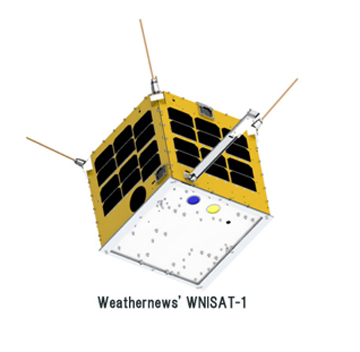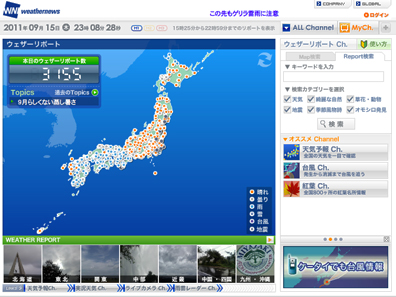Weathernews Inc. of Tokyo, Japan, has fixed the date for the launch of WNISAT-1 from the Yasny Cosmodrome in Russia for next September. WNISAT-1 has been designed for monitoring ice conditions in the Arctic Sea. A continuation of the effort to monitor melting in the Arctic, the innovative satellite will provide data necessary to fully realize a Polar Routing service for the shipping industry. The satellite has been developed independently by Weathernews in partnership with start-up AXELSPACE of Tokyo as an ultra-compact solution to ensure safe polar voyages via the polar route.
Ice in the Arctic has been receding progressively every summer for the past few years as a result of global climate changes. These changes have allowed commercial vessels to transit this area. This summer saw ice receding at a record pace, opening a route (northeastern passage) from the Siberian Coast a month earlier than usual. The route allows a voyage from Europe to Asia to be completed in 2/3 the distance of a route via the Suez Canal, and half the distance of a route via the Cape of Good Hope. Widespread adoption of this alternative route will dramatically reduce the distance, fuel and environmental impact of global shipping traffic. At Weathernews, monitoring and forecasting conditions in this region have been a major goal since 2006. WNISAT-1 is an example of continuing efforts by Weathernews toward the realization of this dream.
 For monitoring Arctic Sea ice, Weathernews is using data from government-operated satellites at this stage. However, to ensure safe voyages via the northern route, a higher volume of data requiring a higher rate of monitoring means that an independent satellite is needed. Weathernews began developing the satellite in 2008, focusing its design on functionality for monitoring ice, rather than multiple applications common in larger satellites. Ultra-compact (27cm cubed) and highly functional, the comparatively reasonable manufacturing and operating costs of the satellite will allow Weathernews to provide a Polar Routing service for customers at a reasonable cost as well. Currently, the production model of the satellite is undergoing testing with Axel Space to ensure it will function in orbit. WNISAT-1 will complete 15 orbits each day, taking pictures of the Arctic, and sending them back to Earth. The data will be analyzed by the Global Ice Center at Weathernews to create ice forecasts for pioneering shipping companies operating voyages through the polar region. The satellite will be launched into its orbit piggybacked on a Dneper-1 rocket on September 28, 2012.
For monitoring Arctic Sea ice, Weathernews is using data from government-operated satellites at this stage. However, to ensure safe voyages via the northern route, a higher volume of data requiring a higher rate of monitoring means that an independent satellite is needed. Weathernews began developing the satellite in 2008, focusing its design on functionality for monitoring ice, rather than multiple applications common in larger satellites. Ultra-compact (27cm cubed) and highly functional, the comparatively reasonable manufacturing and operating costs of the satellite will allow Weathernews to provide a Polar Routing service for customers at a reasonable cost as well. Currently, the production model of the satellite is undergoing testing with Axel Space to ensure it will function in orbit. WNISAT-1 will complete 15 orbits each day, taking pictures of the Arctic, and sending them back to Earth. The data will be analyzed by the Global Ice Center at Weathernews to create ice forecasts for pioneering shipping companies operating voyages through the polar region. The satellite will be launched into its orbit piggybacked on a Dneper-1 rocket on September 28, 2012.


